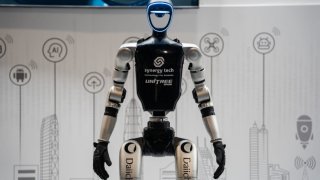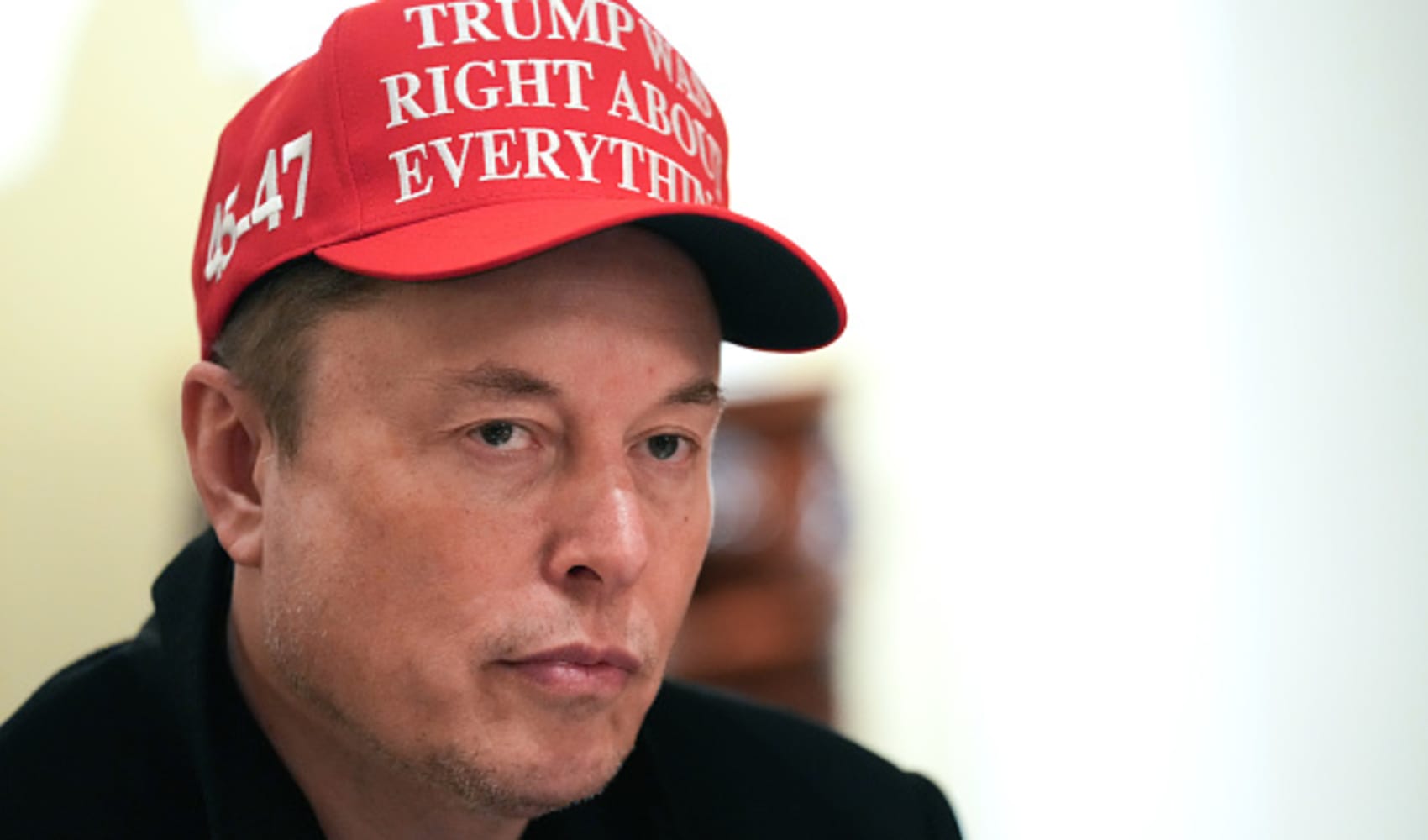
Unitree’s G1 robot at the Mobile World Congress 2025 in Barcelona, Spain, on March 6, 2025.
- Investor excitement surrounding the robots has been mounting amid increased mentions from tech leaders like Nvidia's Jensen Huang and ambitious plans from Tesla's Elon Musk.
- However, analysts warn that U.S. firms could lose out to China, which aims to replicate its success with electric vehicles in the nascent robotics space.
American tech companies are racing to usher in the development of humanoid robots, stressing their importance to the future economy. But analysts warn they are already at risk of losing out to competitors in China.
So-called humanoid robots — artificial intelligence-powered machines designed to resemble humans in appearance and movement — are expected to provide a range of use cases, such as filling industrial and service sector jobs.
Watch NBC 4 free wherever you are
Investor excitement surrounding the robots has been mounting amid increased mentions from tech leaders like Nvidia's Jensen Huang, who ushered in "the age of generalist robotics" earlier this month as he announced a new portfolio of technologies for humanoid robot development.
In the manufacturing of the robots themselves, Tesla's humanoid robot project, Optimus, appears to be leading in the U.S., with CEO Elon Musk announcing plans to produce about 5,000 units this year.
Get Tri-state area news delivered to your inbox with NBC New York's News Headlines newsletter.
While Musk's ambitious plans could give it a leg up on U.S. competitors like Apptronik and Boston Dynamics that are yet to hit the mass market, he will face stiff competition from a familiar source: China.

Hangzhou-based Unitree Robotics last month briefly sold two humanoid robots to consumers on the e-commerce platform JD.com, as per local media. Meanwhile, Shanghai-based robotics startup Agibot, also known as Zhiyuan Robotics, has matched Optimus's goal to produce 5,000 robots this year, according to the South China Morning Post.
Money Report
As Chinese electric vehicle companies like BYD begin outpacing Tesla's growth and undercutting its prices, experts say a similar dynamic could play out in humanoid robotics.
"China has the potential to replicate its disruptive impact from the EV industry in the humanoid space. However, this time the disruption could extend far beyond a single industry, potentially transforming the labor force itself," said Reyk Knuhtsen, analyst at SemiAnalysis, an independent research and analysis company specializing in semiconductors and AI.
Dancing on the competition?
In a research note in February, Morgan Stanley estimated that current building costs of humanoid robots could range from $10,000 to $300,000 per unit, given different configurations and downstream application requirements.
However, Chinese companies are already undercutting U.S. competitors in terms of price thanks to superior economies of scale and manufacturing capabilities, according to Knuhtsen.
For example, Unitree released its G1 humanoid robot for consumers in May with a starting price of $16,000. In comparison, Morgan Stanley estimates that the selling cost of Tesla's Optimus Gen2 humanoid robot could be around $20,000, but only if the company is able to scale, shorten its research and development cycle, and use cost-effective components from China.
Unitree made a major splash in the robot's space in January when 16 of its highest-performing H1 humanoid robots joined a group of human dancers to celebrate the Lunar New Year in a demonstration broadcast on national television.
But there are signs that China's progress in robots go much further. Morgan Stanley's February research note found that the country has led the world in patent filings mentioning "humanoid" over the past five years, with 5,688 patents compared with 1,483 from the United States.
Large players such as Xiaomi and EV makers, such as BYD, Chery, and Xpeng, are also involved in the humanoid robot space.
"Our research suggests China continues to show the most impressive progress in humanoid robotics where startups are benefitting from established supply chains, local adoption opportunities, and strong degrees of national government support," the note said.
Beijing has increasingly backed the space, with government departments promoting their development. In 2023, the Ministry of Industry and Information Technology issued guidelines for the space, calling for "production at scale" by 2025.
According to Ming Hsun Lee, head of Greater China automotive and industrials research at BofA Global Research, China sees humanoid robots as an important industry because of their potential to mitigate looming labor shortages.
"I think in the short-term, three to four years, we will see humanoid robots initially applied in production lines to compare some workers, and in the midterm, we will see them gradually spread into the service industry," he said.
Musk predicted that he'd have over 1,000, or a few thousand, Optimus robots working at Tesla in 2025. According to Chinese state media, EV makers like BYD and Geely have already deployed some of Unitree's humanoid robots at their factories.
Lee said that increased adoption will coincide with a "very fast" decline in component costs, also noting that China owns around 70% of the supply chain for these components.
According to a report by SemiAnalysis earlier this month, the Unitree G1 — "the only viable humanoid robot on the market" — is entirely decoupled from American components.
The report warns that China is the only country positioned to reap the economic awards of intelligent robotics systems, including humanoid robots, which "poses an existential threat to the US as it is outcompeted in all capacities."
"To catch up, U.S. players must rapidly mobilize a strong manufacturing and industrial base, whether domestically or through allied nations ... For Tesla and similar firms, it may be wise to begin reshoring or 'friendshoring' their component sourcing and manufacturing to reduce reliance on China," said SemiAnalysis' Knuhtsen.
Bank of America analysts predicted in a research note this month that the deployment of humanoid robots will accelerate rapidly, aided by the development of AI, with global annual sales reaching 1 million units by 2030 and 3 billion humanoid robots in operation by 2060.






